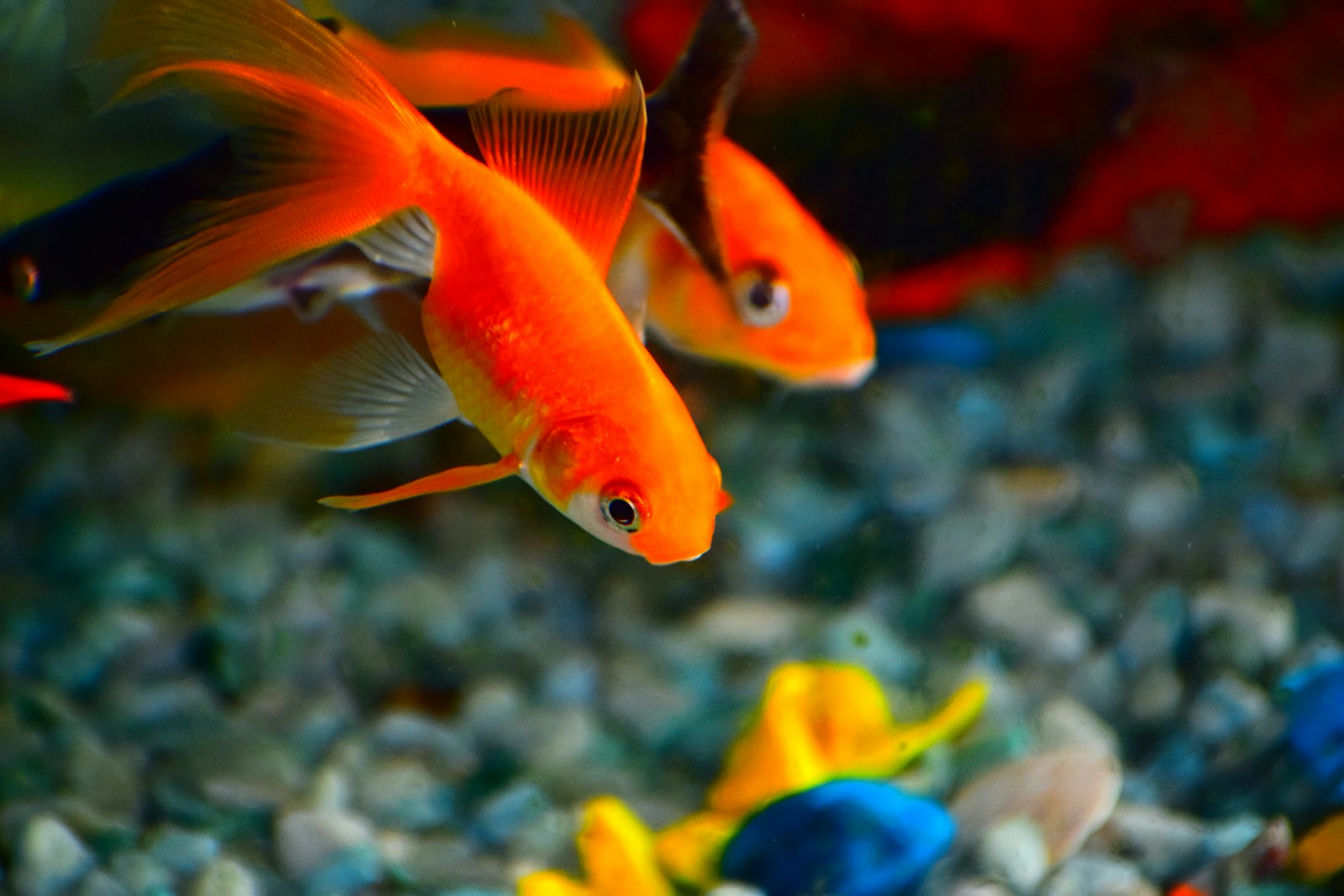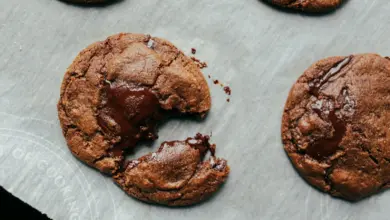
Goldfish crackers are a go-to snack for many, but are they okay for diabetics? The short answer is yes, but moderation is key. These cheesy favorites contain carbs that can impact blood sugar levels, so portion control matters. If you’re managing diabetes, it’s essential to know how snacks like Goldfish fit into your daily plan while keeping blood sugar stable. This post will guide you through what you need to know.
Understanding Diabetes and Dietary Needs
Diabetes affects how the body processes sugar, impacting many aspects of daily life, including diet. To manage blood sugar effectively, understanding the type of diabetes and general nutritional guidelines is essential.
Types of Diabetes

Photo by Pavel Danilyuk
Diabetes comes in three main categories, each with unique causes and challenges:
- Type 1 Diabetes: An autoimmune condition where the body attacks insulin-producing cells in the pancreas. As a result, the body struggles to regulate blood sugar without external insulin.
- Type 2 Diabetes: The most common form, often linked to lifestyle and genetic factors. Here, the body’s cells become resistant to insulin, causing a gradual spike in blood sugar.
- Gestational Diabetes: Occurs during pregnancy and usually resolves afterward, though it can increase the risk of developing Type 2 diabetes later in life.
For more insights on these types, explore this comprehensive guide by the Cleveland Clinic.
Nutritional Guidelines for Diabetics
Managing diabetes starts with a solid nutritional plan. What you eat directly affects your blood sugar levels, so making informed choices is key. Here are some general dietary principles for diabetics:
- Monitor Carbohydrate Intake: Carbs are the main nutrient that impacts blood sugar. Focus on complex carbs like whole grains and reduce simple sugars like candy.
- Choose Low-Glycemic Foods: Foods like legumes, vegetables, and whole fruits (in moderation) help stabilize blood sugar.
- Incorporate Fiber: Dietary fiber slows digestion, preventing blood sugar spikes. Aim for at least 25-30 grams daily.
- Limit Saturated Fats: Replace these with healthy fats like those in nuts, seeds, and olive oil.
- Control Portion Sizes: Overeating—even healthy foods—can disrupt blood sugar management.
For more detailed guidance, check out these Nutritional Guidelines for Diabetes Management from the CDC.
Understanding these aspects of diabetes and nutrition lays the groundwork for answering questions like, “Can a diabetic eat Goldfish?” The next section will further break down how specific snacks fit into a diabetic-friendly diet.
Nutritional Content of Goldfish Crackers
Goldfish crackers are known for their cheesy flavor and convenient packaging, making them an all-time favorite snack. However, for individuals managing diabetes, understanding the details of their nutritional content is essential. Knowing what’s inside can help you make more informed decisions about whether and how to include these snacks in your diet. Here’s a breakdown of the nutritional elements that matter most to diabetics.
Carbohydrate Content: Detail the carbohydrate content and its impact on blood sugar levels
Carbohydrates directly impact blood sugar levels, making it the most crucial factor for those managing diabetes. A standard serving size, approximately 55 pieces or 30 grams, contains about 20 grams of carbohydrates. These carbs mostly come from flour and starch used in the baking process.
For diabetics, this carbohydrate amount may seem moderate, but portion size is key. Consuming too many Goldfish crackers can result in a blood sugar spike due to their simple carbohydrate content. If you’re snacking on these, pairing them with a source of protein or healthy fat can slow down carbohydrate absorption and reduce any dramatic impact on your blood sugar levels.
Learn more about Goldfish Cheddar Crackers for an in-depth look at their nutritional value.
Sugar and Fiber Levels: Investigate the sugar content and the presence of fiber in Goldfish
When it comes to sugar, Goldfish crackers score low, with only less than 1 gram of sugar per serving. This makes them a better option than sugary snacks that can cause rapid blood sugar spikes. However, their fiber content is also minimal, which can be a downside for diabetics seeking snacks with more dietary fiber to stabilize blood glucose.
Why is fiber so important? Fiber works like a traffic cop for digestion—keeping things moving slowly and steadily, helping to avoid sugar spikes. Unfortunately, Goldfish crackers lack substantial fiber (they contain less than 1 gram per serving), making them less ideal as a stand-alone snack option for blood sugar management.
If you’re looking for a low-sugar yet fiber-rich snack, it might be worth considering alternatives like whole-grain crackers or high-fiber crisps.
Serving Size and Caloric Value: Discuss the recommended serving size and calorie count

Photo by Nataliya Vaitkevich
The serving size of Goldfish crackers is approximately 55 pieces (30 grams), which provides 140 calories. While this may seem like a reasonable caloric amount for a snack, it can add up quickly if you’re not careful with portion control. Goldfish are easy to overeat, given their small size and addictive flavor.
For people managing diabetes—or simply trying to adhere to a balanced diet—mindful eating is essential. Measure out a serving size in advance to avoid eating straight from the bag, where it’s easy to lose track of how much you’ve consumed. If portion control isn’t followed, those 140 calories can quickly double or triple, affecting both your calorie and carbohydrate intake for the day.
Understanding the serving size, sugar, fiber, and carbohydrate content is essential when considering Goldfish crackers as a snack option for diabetics. Opting for smaller portions, balancing them with healthier food choices, and being mindful of their nutritional limits can all help you enjoy this snack without compromising your health.
Moderation is Key: Portion Control for Diabetics
When it comes to managing diabetes, moderation in snack portions cannot be overstated. This is especially true for snacks like Goldfish crackers, which contribute carbohydrates to your daily intake. While Goldfish can be part of a diabetic diet, eating them without consideration for portion sizes may lead to blood sugar spikes. By practicing mindful portion control and understanding how foods affect blood sugar, you can make smarter snack choices.
Understanding Glycemic Index and Load: How It Applies to Goldfish

Photo by Nataliya Vaitkevich
Carbohydrates in snacks like Goldfish crackers have a direct impact on blood sugar levels. But how do you measure this impact? This is where the Glycemic Index (GI) and Glycemic Load (GL) come in.
- Glycemic Index ranks how quickly a food raises blood sugar. Foods high on the GI scale cause faster spikes, while low-GI foods lead to a steadier increase.
- Glycemic Load, on the other hand, factors in the amount of carbohydrates, offering a more practical assessment of a food’s impact on blood sugar.
Goldfish crackers are considered a mid-GI food due to their carbohydrate composition. They won’t cause as rapid a spike as candy, but they aren’t as slow-releasing as whole grains either. The glycemic load of a typical serving size of Goldfish is moderate, meaning one serving can fit into a balanced diabetic diet if paired with foods that rate low on the glycemic scale.
For a deeper dive into glycemic index and glycemic load, explore The Lowdown on Glycemic Index and Glycemic Load.
Practical Portion Control Tips
Smart portion control can help you enjoy snacks like Goldfish without jeopardizing your blood sugar levels. Here are some potent tips to keep in mind:
- Measure Out Servings: Don’t eat straight from the bag. Portion out a single serving (55 pieces or about 30 grams) into a bowl to avoid over-snacking.
- Use Visual Cues: Think of one serving as about the size of your cupped hand. This makes it simpler to stick to the right portion when you’re away from home.
- Pair with Protein or Fiber: Snack on Goldfish crackers with a handful of nuts, a boiled egg, or raw veggies. Protein and fiber can slow down digestion and manage blood sugar better.
- Try Smaller Snack Packs: Opt for pre-packaged single servings to make portion control effortless.
- Read Labels Closely: Check the nutritional labels for serving information and keep track of your overall carbohydrate intake throughout the day.
- Practice Mindful Eating: Focus on your snack. Avoid eating while distracted by screens or multitasking.
For more tactics on controlling portions, check out How to Practice Portion Control with Type 2 Diabetes.
Understanding glycemic index, glycemic load, and practicing portion control are fundamental steps for managing diabetes effectively. Snacks like Goldfish crackers can remain part of your diet when consumed in moderation and paired wisely with other foods.
Healthy Alternatives to Goldfish Crackers
Finding healthier snacks is essential when managing diabetes, especially if you want to keep your blood sugar steady. Goldfish crackers may be your childhood favorite, but there are plenty of better substitutes available. Whether you’re aiming for low-carb, high-protein options, or simply alternatives with more fiber, this guide will give you some great ideas.
Low-Carb Alternatives
Cutting down on carbs is crucial for diabetics to maintain stable blood sugar. Here are some diabetes-friendly snacks that deliver on flavor without loading up on carbs:
- Cheese Crisps: These are a satisfying, crunchy snack that’s low-carb and packed with protein. Look for options like Parmesan crisps or cheddar cheese bites.
- Nuts and Seeds: Almonds, walnuts, chia seeds, or sunflower seeds are perfect portable snacks. They’re high in healthy fats and low in carbs.
- Veggie Sticks with Hummus: Slice up celery, cucumbers, or bell peppers and pair them with low-carb hummus for a fresh, crunchy bite.
- Hard-Boiled Eggs: A hard-boiled egg contains almost no carbs while offering high protein, making it a great snack.
- Low-Carb Crackers: Crackers like almond flour or flaxseed crackers provide the crunch you want, without the high carbohydrate content. They’re a great swap for Goldfish.
For a wider selection of low-carb options, check out EatingWell’s 10 Low-Carb Snacks for Diabetes.
High-Protein Snack Ideas
Adding protein to your snacks can help manage blood sugar levels by slowing digestion. Here are some high-protein snack alternatives to Goldfish crackers:
- Greek Yogurt: Opt for plain, unsweetened Greek yogurt and top it with a sprinkle of flaxseeds or a handful of berries.
- Protein Bars: Look for bars with low sugar and high protein content, such as those made with nuts and seeds.
- Tuna with Crackers: Low-carb crackers paired with small portions of tuna or salmon provide both protein and heart-healthy omega-3s.
- Roasted Chickpeas: These crunchy morsels are not just high in protein but also fiber, helping stabilize blood sugar.
- Edamame: Steam these green soybeans for a high-protein, nutrient-rich snack.
Dive deeper into diabetes-friendly snack options with The Best Snack Ideas If You Have Diabetes.
By swapping out Goldfish crackers for healthier, low-carb, and high-protein options, you’re not only diversifying your snack game but also making better choices for your health. Whether you prefer savory or crunchy, there’s an alternative out there for you!
Consulting with Healthcare Professionals
Managing diabetes requires more than just watching what you eat; it’s about building an informed and individualized approach to your health. One of the best ways to do this is by consulting with healthcare professionals. They provide a tailored roadmap for managing your condition, especially when deciphering whether snacks like Goldfish crackers fit into your diet.
Dietitian Guidance: How a Dietitian Can Assist in Meal Planning

Photo by Pavel Danilyuk
If you’re unsure how to incorporate snacks like Goldfish into a diabetes-friendly diet, a registered dietitian is your go-to expert. Dietitians specialize in creating customized meal plans that support blood sugar control and overall health. They’re like your personal GPS for navigating food choices.
Here’s how they can help:
- Carbohydrate Planning: Determine how Goldfish crackers fit into your daily allowance.
- Substitution Suggestions: Offer healthier alternatives if the snack doesn’t meet your nutritional needs.
- Portion Control Tips: Provide tips for enjoying snacks while managing blood sugar.
- Balanced Approach: Suggest pairing snacks with proteins or healthy fats for better blood sugar results.
Working with a dietitian ensures you’re not just guessing but making informed choices. For deeper insights into how dietitians can assist, check out How an RDN Can Help with Diabetes.
Regular Monitoring of Blood Sugar Levels: Understanding Personal Responses to Food
Everyone’s body responds differently to dietary choices. For diabetics, regular blood sugar monitoring is more than just a habit—it’s a critical tool. When you snack on something like Goldfish crackers, tracking your glucose levels can reveal how your body processes them.
Why is this important?
- Identify Triggers: Spot foods that cause sharp blood sugar spikes.
- Evaluate Portions: Measure how different serving sizes affect your levels.
- Guide Adjustments: Use the data to tweak snacks or mealtime choices.
Pairing this data with professional guidance from your healthcare team gives you a clearer picture of what works. Tools like continuous glucose monitors or blood sugar logs take the guesswork out of food decisions. Your healthcare provider can interpret these trends and make tailored recommendations, keeping you on track toward better control. For an overview of how consulting specialists can shape your plan, visit Your Diabetes Care Team.
By working with professionals, you’re not alone in balancing snacks like Goldfish crackers with your health goals.
Conclusion
Diabetics can enjoy Goldfish crackers as part of a balanced diet, but moderation makes all the difference. Stick to serving sizes and pair them with high-protein or fiber-rich foods for better blood sugar control. Always measure portions and stay mindful of how these snacks fit into your daily carbohydrate limit.
Managing diabetes doesn’t mean giving up favorites like Goldfish. It’s about making informed choices, practicing portion control, and monitoring your body’s response. Remember, healthy snacking is possible with a little planning. Got a unique snack tip? Share it in the comments!





